




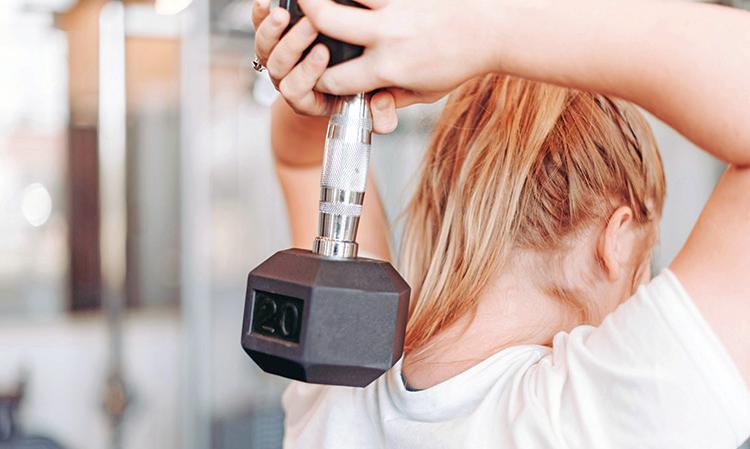
• Get on the greens • Caffeine and your body • More nutritious meals
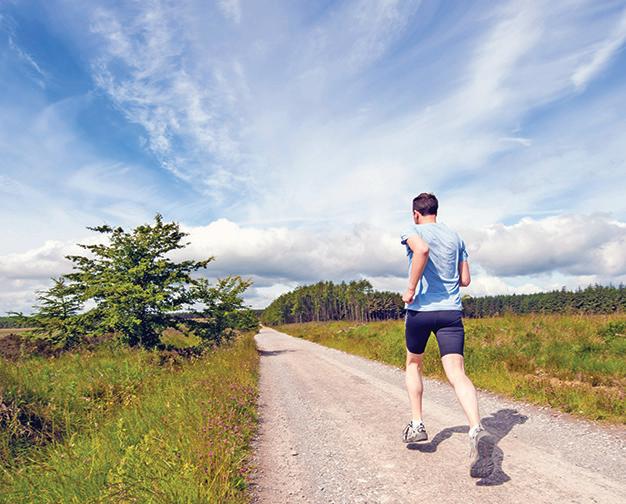








it can
Around 80 percent of the United States population consumes caffeine regularly, according to data from the U.S. Food & Drug Administration. Caffeine is found in coffee, tea, energy drinks, and some headache medications.
The National Center for Biotechnology Information says caffeine is the most widely consumed nervous system stimulant.
Caffeine is considered a psychoactive drug. That means it alters the mind. Caffeine can change the way people think and feel.
Playing a round of golf is a great way to spend a morning, afternoon or early evening. That’s particularly true when the weather is warm and a golf course is soaked in sunshine and cooled down by warm breezes whistling through the surrounding trees.
Though many see golf as recreation, the sport can offer some notable health benefits.
The Royal and Ancient Golf Club of St. Andrews, which was founded in 1754 and has since grown from a small club to one with 2,500 members across the globe, published a recent golf and health report.
That report highlights research indicating the ways golf promotes both mental and physical health, and such evidence can make anyone feel better about spending a day on their nearest course.
With that in mind, individuals can consider these notable health benefits of playing golf the next time they’re thinking about visiting their local course.
Frustrated golfers who can’t master their short game may suggest otherwise, but a study published in the Scandinavian Journal of Medicine and Science and Sports discovered a 40 percent reduction in mortality rates among 300,000 members of the Swedish Golf Federation.
That corresponded to an increased life expectancy of roughly five years and
applied to golfers of all ages, genders and socio-economic backgrounds.
A summary of findings conducted by researchers at the University of Edinburgh and published in the British Journal of Sports Medicine recently found that golf can help prevent and treat a number of major chronic diseases.
Among the things it can assist is keeping at bay are diabetes, heart attack, stroke, depression, dementia, and cancers of the breast and colon.
That link probably has something to do with golf being a physical activity that encourages people to embrace a less sedentary lifestyle.
The Royal and Ancient Golf Club notes that additional studies have found that risk factors for heart disease and stroke, including high blood pressure, are reduced among people who play golf.
The Alzheimer’s Society reports that social isolation can increase a person’s risk for dementia by roughly 60 percent.
People who play golf tend to play in groups of two, three or four, and that social interaction can promote social interaction among people of all ages.
Social isolation also has been linked to additional mental health issues, including anxiety and depression, so activities like golf that encourage social interaction can help people safeguard their mental health.
A round of golf may be widely viewed as a recreational activity. However, a day on the links also provides some notable health benefits.
(METRO CREATIVE)
Healthline says the stimulating effects of caffeine contribute to its popularity. Caffeine will cause immediate alertness and temporarily relieve fatigue. Caffeine also may help enhance mood, and Healthline reports one study found caffeine was linked to a 45 percent reduced risk of suicide in participants.
Moderate amounts of caffeine may help increase focus and attention, according to the mental health and substance abuse resource Here to Help. It also may help boost endurance while playing sports or engaging in other physical activities.
Generally speaking, when caffeine is used in low to moderate amounts, it could prove beneficial. It’s when too much caffeine is
consumed that people can get in trouble.
The following are some of the detrimental effects of caffeine.
• Confusion and overstimulation can occur.
• Headaches can happen from too much caffeine or from withdrawal.
• Irritability also may be a symptom of withdrawal when the body becomes accustomed to caffeine.
• Caffeine may help keep a person regular, but too much can do the opposite and lead to diarrhea.
• Excessive caffeine can prevent calcium absorption in the bones, which may increase risk for osteoporosis and bone fractures.
• Some women who consume too much caffeine may have trouble conceiving a baby, and if caffeine is consumed in high amounts during pregnancy, there’s a risk of developmental issues in newborns or possibly miscarriage.
• Increased blood pressure also may result from consuming caffeine in high amounts.
Caffeine can have many effects on the body. It’s important to understand both the positive and negative impact of caffeine on the body and brain.
(METRO CREATIVE)

Caffeine will cause immediate alertness and temporarily relieve fatigue. Caffeine, which is in coffee and soft drinks, among other things, also may help enhance mood however, it can have detrimental effects when too much is consumed.
EDITOR IN CHIEF
SECTION
CREATIVE
SPECIAL SECTIONS
ADVERTISING
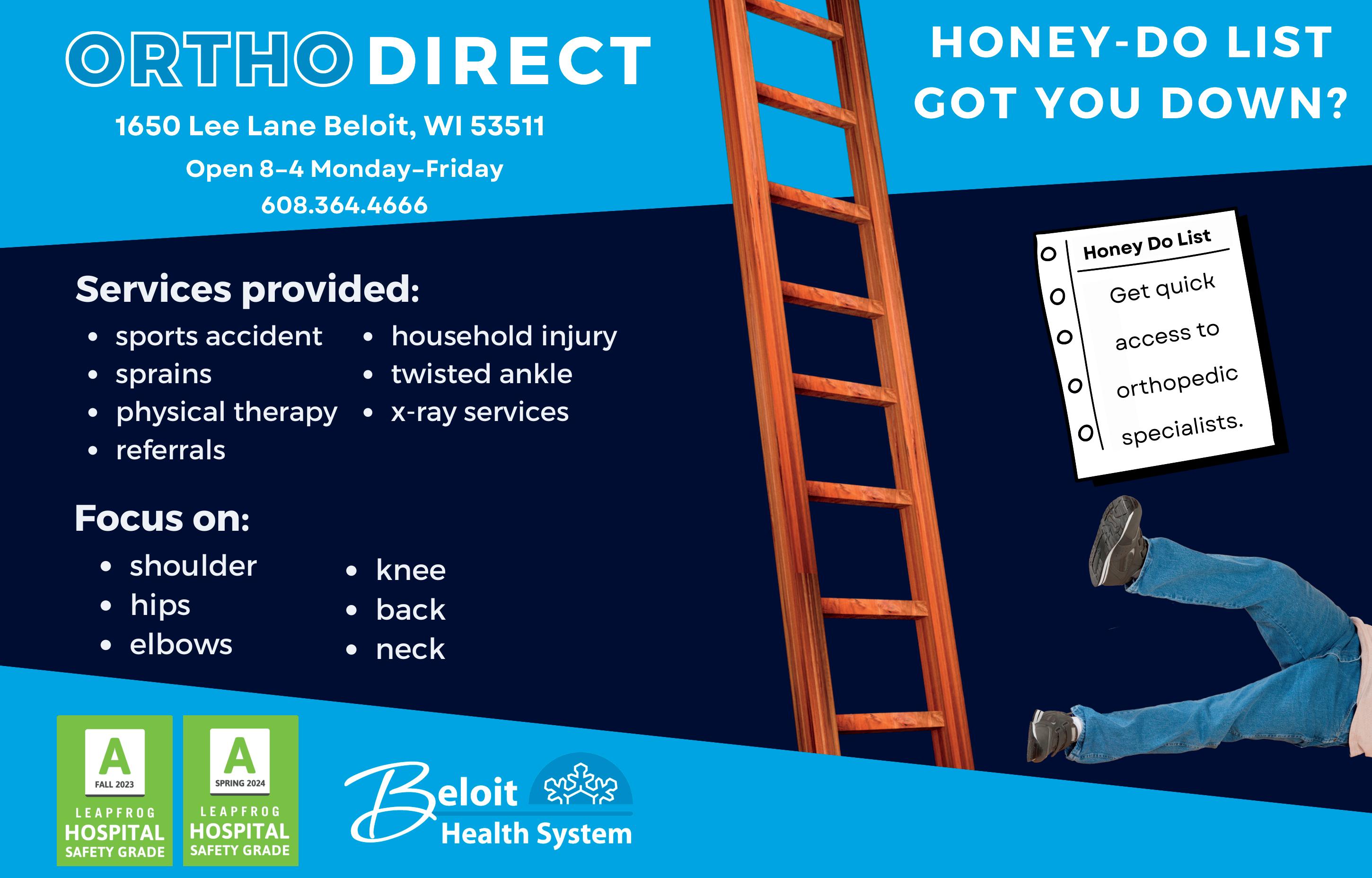

Each person approaches exercise in their own unique way. Some can’t wait to get to the gym every day, while others exhibit significantly less enthusiasm about exercise.
Some medical professionals say the best approach to exercise is the one that inspires a consistent commitment to physical activity, but various factors, including food, merit consideration when designing a workout routine.
Food provides energy for the body, so it makes sense to eat before a workout. But eating prior to a workout may not be so straightforward for all exercise enthusiasts.
An examination of the dynamic between eating and exercise can help athletes find a formula that works for them.
The Hospital for Special Surgery recommends eating before exercise if it’s been two or more hours since your last meal or snack. Doing so can help to restore energy stores prior to an intense or lengthy workout.
The HSS notes this approach is especially beneficial for individuals who work out early in the morning, before lunch or after school or work, each of which are times of day when it’s typically been a while since a person has eaten.
How much should I eat before exercising?
It’s unlikely anyone is going to want to eat a large meal before a workout. Doing so will undoubtedly affect performance in a negative way, particularly if you’re eating shortly before a workout.
The HSS notes that the further away a workout is from the time a person eats, the larger and more mixed that meal can be.
According to the HSS, the general guideline around eating and exercise is:
• A full meal three to four hours before exercising

• A higher carbohydrate snack two hours before exercising and/or a small, easily digested carbohydrate right up until the start of a workout
Should I eat during a workout?
The HSS notes it can help to consume some carbs during workouts that last 60 minutes or longer. Doing so can help individuals prolong their endurance and can even help with their timing and concentration.
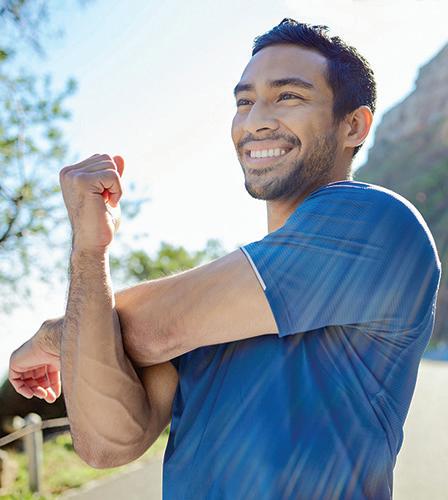
The relationship between eating and exercise is complicated. Individuals who want to learn more are urged to work with a nutritionist.
What makes for a good pre-workout snack?
If you won’t be eating a full meal before a workout, various mini snacks can provide energy without adversely affecting performance. Pre-workout snacks that are low in fat and fiber are
ideal, as the body can digest such foods quickly.
The HSS notes half a banana, a small serving of applesauce or a handful of crackers or pretzels are a good preworkout mini snack. A larger snack eaten a little further away from a workout can include some hummus or peanut butter.
The Mayo Clinic notes yogurt, a fruit smoothie or a low-fat granola bar also make good pre-workout snacks.
(METRO CREATIVE)
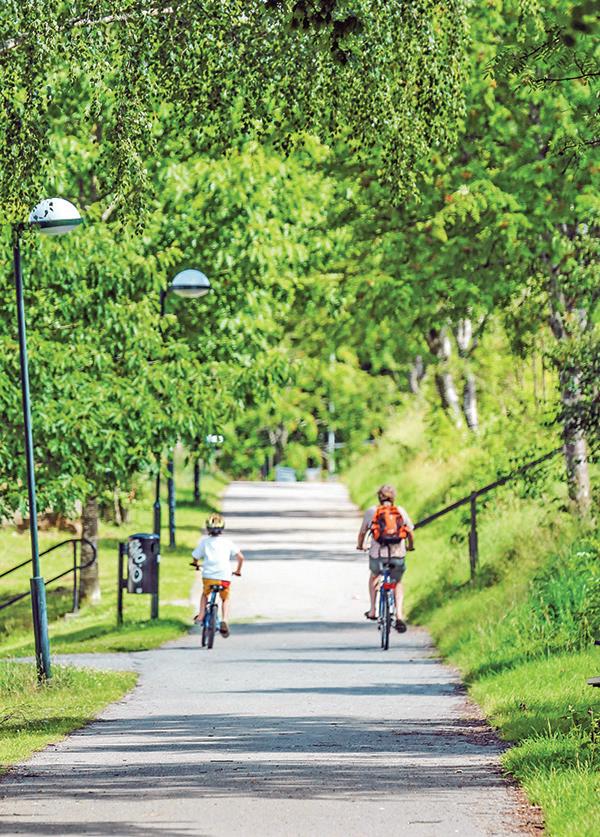
George Gershwin’s song “Summertime,” from “Porgy and Bess,” offers: Summertime and the livin’ is easy; Fish are jumpin’ and the cotton is high.
Summer can be a magical season full of fresh air, warm days and nights, blooming flowers, and plenty of opportunities to spend time in the great outdoors.
There are so many ways to fill summer days, and people are urged to maximize time spent outdoors during this time of year.
Since the sun’s rays can be particularly harmful between the hours of 10 a.m. and 3 p.m., protective clothing and sunscreen is recommended during this time; otherwise, people can engage in outdoor activities during times when the sun is less potent.
Those seeking some summertime recreation inspiration can consider these activities.
Explore trails or bike paths in the area in advance, and then prepare bikes for an excursion.
Bicycle riding is a great
cardiovascular activity that people of all ages and fitness levels can enjoy.
Try flat paths for beginners, and then build up the length and intensity of rides as experience is gained.
Some attest there is no more perfect place than the beach on a summer day.
The waves lapping the sand, the birds calling in the air, and the sounds of children’s laughter and sunbathers’ chatter all combine to create a relaxing seaside symphony.
According to WebMD, the negative ions given off by the ocean can improve mood and add to the calming effect the beach provides.
Construct an obstacle course in the backyard that everyone can try and if the kids are old enough, let them help with the building process.
It can include having to jump through tires; climb a jungle gym; run through a sprinkler; and crawl under a low-hung clothesline.
Family members can compete to see who can finish the course in the
least amount of time.
Whether it’s walking the streets of nearby towns and cities to do some shopping and enjoy lunch at a local restaurant or spending some time exploring the Geneva Lake shore path or at an area nature conservancy, it’s no secret that this simple movement can do wonders for our health.
The best part is that speed is not a requirement so even a slow walk brings plenty of benefits.
In a survey of Americans 18 and older conducted by the National Recreation and Park Association, nearly 50 percent said going for a walk or hike was their favorite outdoor summer activity.
Hiking requires very little to get started and can produce numerous opportunities to witness nature and get some exercise.
There’s no limit to the ways people can enjoy the great outdoors when the weather warms up. (METRO
If the idea of eating healthy make you think that you have to give up all of your favorite foods, you’re in the majority.
While it is true that certain foods may not make the healthiest choices, substitutions can add nutritional value to some beloved yet traditionally unhealthy dishes.
The United States Department of Agriculture Dietary Guidelines for Americans emphasizes the need for people to reduce the amount of added sugar, sodium and fat they consume, all the while increasing fiber consumption.
Subtle changes may make it possible to boost beneficial nutrients and reduce the caloric load of various dishes.
Here are some simple substitutions to keep in mind when aspiring to eat healthier.
Original: Butter and oil
Swap: Applesauce, mashed avocado or mashed banana
Plant-based alternatives can add moisture to baked goods without increasing saturated fat.
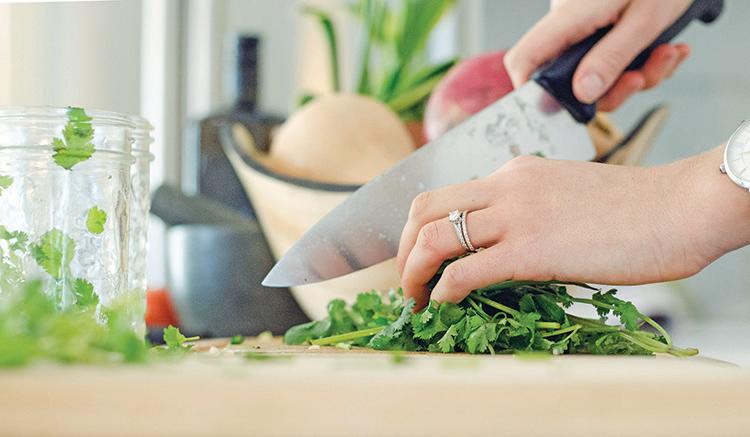

Even swapping out a portion of the butter or oil with these alternatives can make the item healthier.
Swap: Different cooking methods
Baking, broiling, grilling, or roasting can produce delicious results. Many people utilize air fryers that employ convection to simulate frying without the need for all the oil frying requires.
Swap: Maple syrup or mashed dates
Many people think they need to give up on sweets when eating healthy. Sugar is an added ingredient in so many foods, so reducing consumption can help.

In addition to slashing the amount of sugar recommended for recipes, swap out sugar with maple syrup, honey or even mashed fruits. These are better options than refined sugars.
Swap: Herbs and other spices
Omit half of the salt recommended in a recipe. Replace the salt with spices or herbs to add flavor.
It’s also worth noting that nutritional yeast can add a salty umami flavor to many dishes as well as providing additional nutrients.
Original:
Swap: Brown rice, quinoa or couscous
Add additional fiber and/or protein to

dishes by swapping processed white rice with whole grains.
Similarly, swap regular pastas with whole grain, and white bread with whole grain bread.
Swap: Almond meal or milled flaxseed
Breadcrumbs impart flavor and texture, but they add calories with no nutritional value. Consider breading foods in almond meal or milled flaxseed to provide omega-3 fatty acids.
Substituting certain ingredients for others and embracing new food preparation techniques can add nutritional value to some beloved foods. (METRO


The great outdoors beckons billions of people across the globe every day. There’s much to be gained from spending time outdoors.
According to the American Psychological Association, exposure to nature has been linked to improved attention, lower stress, improvements in mood, and reduced risk of psychiatric disorders.
With so many positives to be had by getting outdoors, it’s no wonder so many people embrace opportunities to get outside. When doing so, it’s important that individuals take proper precautions, such as wearing sunscreen and staying hydrated.
It’s equally important to protect your eyes before soaking up some summer sun.
• Purchase prescription sunglasses, if necessary. Sunglasses are vital to protecting the eyes from the sun’s ultraviolet (UV) rays. If you wear prescription eyeglasses indoors, then you should also wear prescription sunglasses when spending time outside.
Even contact lens wearers may want to invest in prescription sunglasses for those times when they’re engaging in physical activity outdoors. Sweat makes its way into the eyes when exerting oneself outdoors, and that can make contacts uncomfortable.
Airborne allergens like pollen also can make contacts less comfortable when outside, and prescription sunglasses can help people avoid such discomfort while protecting the eyes from UV rays.
• Wear a hat or visor. Hats and visors also help to protect the eyes from UV rays. The National Eye Institute recommends wearing sunglasses even on cloudy days, but it’s easy to forget them when leaving home or the car on an overcast morning or afternoon.
Hats or visors can serve as a safety net on cloudy days when you forget to bring your sunglasses.
• Avoid rubbing your eyes. Whether it’s airborne allergens or debris, things can get into the eyes when spending time outdoors. In such instances, your first instinct might be to rub your eyes.
However, University of Utah Health notes that rubbing your eyes can be very dangerous and increase risk for illness. Virus droplets can attach to hands and enter the body through the conjunctiva, a thin layer of tissue that lines the inner eyelid. This can cause infection in the eye. Dust and dirt on relatively clean but unwashed hands also can enter the eyes upon rubbing them, potentially leading to irritation and infection.
The bottom line is it’s best to avoid rubbing eyes when they feel irritated and opt for eye cleaners and eyelid wipes instead.
• Keep your hands clean. Though it’s best to avoid touching your eyes with your hands, doing so is an instinctive response for many people.
Frequent hand washing can keep hands free from bacteria and dust that can enter the eyes after they are touched or rubbed. No one knows how clean or dirty surfaces outside their own homes are, and surfaces outside may be particularly dirty or dusty.
Regular hand washing reduces the likelihood that dirt and debris will find its way into your eyes.
When the great outdoors beckons, individuals can take various steps to protect their eyes from damage and infection.

Whether you’re guffawing at a sitcom on TV or quietly giggling at a newspaper cartoon, laughing does you good. Laughter is a great form of stress relief, and that’s no joke.
The United States Department of Veterans Affairs notes that laughter has physiological effects on the body that lead to changes in body chemistry and brain function.
A good sense of humor can’t cure all ailments, but data is mounting about the positive things laughter can do, according to staff at the Mayo Clinic.
A good laugh has great short-term effects. When you start to laugh, it doesn’t just lighten your load mentally, it actually induces physical changes in your body. Laughter can:
• Stimulate many organs –Laughter enhances your intake of oxygen-rich air, stimulates your heart, lungs and muscles, and increases the endorphins that are released by your brain.
• Activate and relieve your stress response – A rollicking laugh fires up and then cools down your stress response, and it can increase and then decrease your heart rate and blood pressure. The result? A good, relaxed feeling.
• Soothe tension – Laughter can also stimulate circulation and aid muscle relaxation, both of which can help reduce some of the physical symptoms of stress.
Laughter isn’t just a quick pick-meup, though. It’s also good for you over the long term. Laughter may:
• Improve your immune system
– Negative thoughts manifest into chemical reactions that can affect your body by bringing more stress into your system and decreasing your immunity. By contrast, positive thoughts can actually release neuropeptides that help fight stress and potentially moreserious illnesses.
• Relieve pain – Laughter may ease pain by causing the body to produce its own natural painkillers.
• Increase personal satisfaction –Laughter can also make it easier to cope with difficult situations. It also helps you connect with other people.
• Improve your mood – Many people experience depression, sometimes due to chronic illnesses.
Laughter can help lessen your stress, depression and anxiety and may make you feel happier. It can also improve your self-esteem.
Are you afraid that you have an underdeveloped – or nonexistent – sense of humor? No problem. Humor can be learned. In fact, developing or refining your sense of humor may be easier than you think, including the following:
• Find a few simple items, such as photos, greeting cards or comic strips, that make you chuckle. Then hang them up at home or in your office or
collect them in a file or notebook.
• Keep funny movies, TV shows, books, magazines or comedy videos on hand for when you need an added humor boost.
• Look online at joke websites or silly videos, listen to humorous podcasts.
• Go to a comedy club.
Laugh and the world laughs with you
Find a way to laugh about your own situations and watch your stress begin to fade away. Even if it feels forced at first, practice laughing. It does your body good.
Consider trying laughter yoga. In laughter yoga, people practice laughter as a group. Laughter is forced at first, but it can – and often does – turn into spontaneous laughter.
• Share a laugh. Make it a habit to spend time with friends who make you laugh. And then return the favor by sharing funny stories or jokes with those around you.
• Knock, knock. Browse through your local bookstore or library’s selection of joke books and add a few jokes to your list that you can share with friends.
Studies show that there’s some truth to the popular notion that “laughter is the best medicine.”
Additional research has found that laughter can lower levels of the stress hormone cortisol, supporting the suggestion that laughter is an effective and even multi-faceted “medicine.”
Luella M. Guzman-Price MD, FAAP Pediatrician


Laura Koenig, MD Internist


Kimberly Knudsen CCC-A, Au.D. Audiologist
Molly Larson, MD
Obstetrician & Gynecologist
Lauren P. Mayer, APNP Pediatric Nurse Practitioner


BethAnn Nowak MSN, AGPCNP-BC, APNP
Adult Gerontology Primary Care Nurse Practitioner
Angela Schuldies
MSN, APRN, PMHNP-BC
Psychiatric Mental Health Nurse Practitioner


Thomas Tackman, MD Internist
